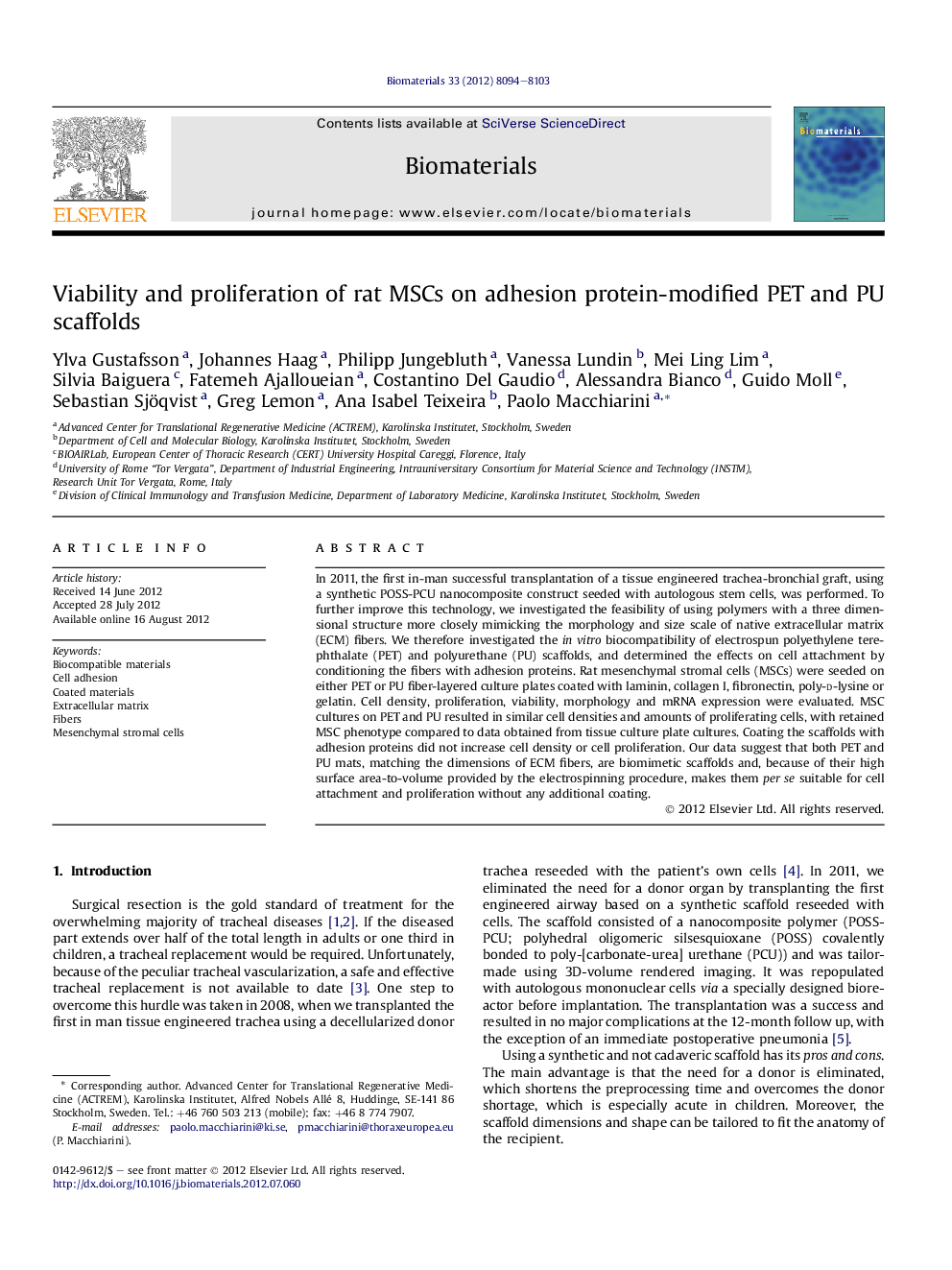| Article ID | Journal | Published Year | Pages | File Type |
|---|---|---|---|---|
| 10229102 | Biomaterials | 2012 | 10 Pages |
Abstract
In 2011, the first in-man successful transplantation of a tissue engineered trachea-bronchial graft, using a synthetic POSS-PCU nanocomposite construct seeded with autologous stem cells, was performed. To further improve this technology, we investigated the feasibility of using polymers with a three dimensional structure more closely mimicking the morphology and size scale of native extracellular matrix (ECM) fibers. We therefore investigated the in vitro biocompatibility of electrospun polyethylene terephthalate (PET) and polyurethane (PU) scaffolds, and determined the effects on cell attachment by conditioning the fibers with adhesion proteins. Rat mesenchymal stromal cells (MSCs) were seeded on either PET or PU fiber-layered culture plates coated with laminin, collagen I, fibronectin, poly-d-lysine or gelatin. Cell density, proliferation, viability, morphology and mRNA expression were evaluated. MSC cultures on PET and PU resulted in similar cell densities and amounts of proliferating cells, with retained MSC phenotype compared to data obtained from tissue culture plate cultures. Coating the scaffolds with adhesion proteins did not increase cell density or cell proliferation. Our data suggest that both PET and PU mats, matching the dimensions of ECM fibers, are biomimetic scaffolds and, because of their high surface area-to-volume provided by the electrospinning procedure, makes them per se suitable for cell attachment and proliferation without any additional coating.
Keywords
Related Topics
Physical Sciences and Engineering
Chemical Engineering
Bioengineering
Authors
Ylva Gustafsson, Johannes Haag, Philipp Jungebluth, Vanessa Lundin, Mei Ling Lim, Silvia Baiguera, Fatemeh Ajalloueian, Costantino Del Gaudio, Alessandra Bianco, Guido Moll, Sebastian Sjöqvist, Greg Lemon, Ana Isabel Teixeira, Paolo Macchiarini,
